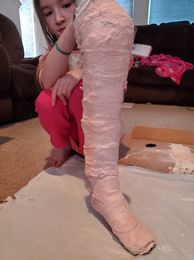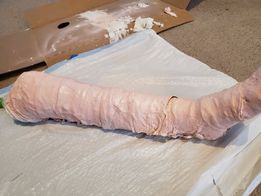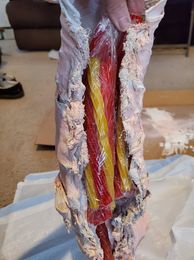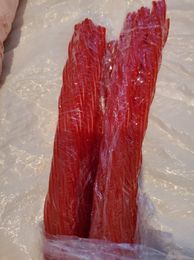I chose to look into Duchenne Muscular Dystrophy for my project. In the earlier stages of DMD, a child’s calve muscles may appear larger than average, giving the muscle a healthier look. However, in reality, the fibers are being broken down. They can not keep up with the healing processes fast enough and are replaced by connective tissue. The larger, healthier look of the muscle is called pseudohypertrophy. The first two pictures show the leg and my model I used to make the leg. The second picture shows a muscle that is not affected by DMD and its healthy leg muscle. I use red Twizzlers for healthy muscle fibers. The third picture shows the muscle of a child with DMD. The yellow Twizzlers are used for the connective tissue replacing healthy fibers. The next two pictures are of the muscles out of the leg.







In Vanessa’s essay, she discussed the functions, locations, and appearance of the three types of muscle tissue, as well as how Duchenne Muscular Dystrophy affects them. The first type of muscle discussed is smooth muscle. This muscle type is involuntary and can be found in the walls of hollow organs, the eye, and the integumentary system. These muscle fibers are short and fusiform. The function of smooth muscle is to move things throughout the body, raise hair, and constrict the iris. The second muscle type discussed is cardiac muscle. This muscle is also involuntary and is only found in the heart. These muscle fibers are striated and branch off, and only have one nucleus. Functions of cardiac muscle include pumping blood throughout the body. Next, skeletal muscle is discussed. This muscle type is voluntary, unlike the other two, and is found throughout the body attached to bones. Skeletal muscle fibers are long, cylindrical, and highly striated. Functions include movement, posture, stabilizing joints, and warming the body. Then the disease Duchenne Muscular Dystrophy is discussed. This disease involves the muscle wasting away due to the protein dystrophin being missing. This is because of a mutation in the X chromosome, which makes men more likely to have this disease. When this protein is missing, muscle fibers become fragile and are easily damaged. This disease is diagnosed early in life, around ages 2 to 5, and affects the extremities closer to the trunk first. It can advance to affect the person’s ability to maintain balance, breath, and can also cause cardiac problems. There are therapies that can help people with this disease live into their forties.